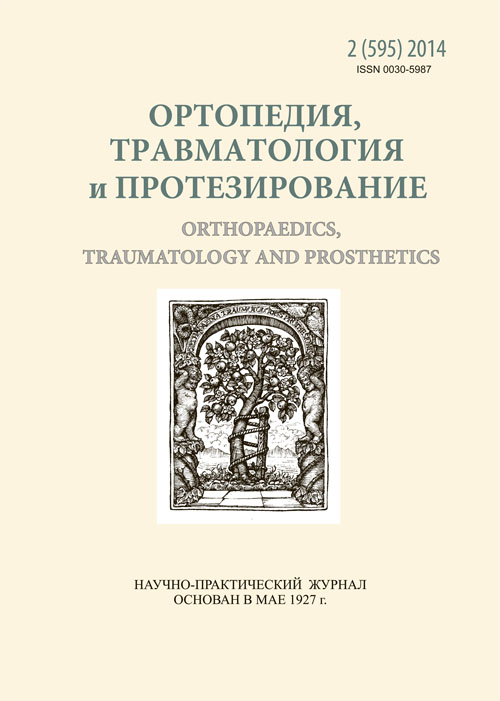Value of exercise and electrical stimulation in the rehabilitation of patients after the knee arthroplasty
DOI:
https://doi.org/10.15674/0030-598720142101-105Keywords:
total knee arthroplasty, knee joint, flexion contracture, rehabilitation, exercises with loading, electrical stimulationAbstract
Functional outcomes of the total knee arthroplasty is largely dependent on early rehabilitation activities initiated. In patients with flexion contractures of the knee joint before surgeries cases of their incomplete elimination are not uncommon after the total knee arthroplasty. This problem is underrepresented in the scientific literature. There is not enough information on the use of physical methods of therapy, electrical stimulation of the thigh muscles and exercises in patients with above mentioned pathology. Objective: to evaluate the effectiveness of electrical stimulation and exercises with early loading in patients with degenerative- dystrophic changes in knee joint and flexion contracture after the total knee arthroplasty. Material: outcomes of treatment in 66 women aged from 52 to 73 years with unilateral lesions of knee joint were evaluated. Patients were divided into three groups depending on the clinical tasks and purpose of the rehabilitation period. It was established that the use electrical stimulation of the thigh muscles in conjunction with exercises significantly improved the functional outcomes of total knee arthroplasty in patients with flexion contracture of the knee joint.References
- Effectiveness of rehabilitation after total knee arthroplasty for gonarthrosis / V. G. Golubev, N. G. Goncharov, D. V. Rimashevsky [et al.] // Journal of Traumatology and Orthopedics named N. N. Priorov. — 2004. — № 2. — P. 27-32.
- Pre-operative flexion contracture determines the functional outcome of haemophilic arthropathy treated with total knee arthroplasty / B. Atilla, O. Caglar, M. Pekmezci [et al.] // Haemophilia. — 2012. — Vol. 18 (3). — P. 358–363.
- Ciolac E. G. Muscle strength and exercise intensity adaptation to resistance training in older women with knee osteoarthritis and total knee arthroplasty / E. G. Ciolac, J. M. Greve // Clinics. — 2011. — Vol. 66 (12). — Р. 2079–2084.
- Flexion contracture following primary total knee arthroplasty: risk factors and outcomes / S. T T . Goudie, A. H. Deakin, A. Ahmad [et al.] // Orthopedics. — 2011. — Vol. 34 (12). — Р. 855–859.
- Comparison of postdischarge physiotherapy versus usual care following primary total knee arthroplasty for osteoarthritis: an exploratory pilot randomized clinical trial / C. J. Minns Lowe, K. L. Barker, R. Holder, C. M. Sackley // Clin. Rehabil. — 2011. — Vol. 26 (7). — Р. 629–641.
- Early neuromuscular electrical stimulation to improve quadriceps muscle strength after total knee arthroplasty: a randomized controlled trial / J. E. Stevens-Lapsley, J. E. Balter, P. Wolfe [et al.] // Phys. Ther. — 2012. — Vol. 92 (2). — Р. 210–226.
- Progressive strength training (10 RM) commenced immediately after fast-track total knee arthroplasty: is it feasible? / T. L. Jakobsen, H. Husted, H. Kehlet, T. Bandholm // Disabil Rehabil. — 2012. — Vol. 34 (12). — Р. 1034–1040.
Downloads
How to Cite
Issue
Section
License
Copyright (c) 2014 Mirkhakim Azizov, Aziz Alimov, Leyla Shomansurova

This work is licensed under a Creative Commons Attribution 4.0 International License.
The authors retain the right of authorship of their manuscript and pass the journal the right of the first publication of this article, which automatically become available from the date of publication under the terms of Creative Commons Attribution License, which allows others to freely distribute the published manuscript with mandatory linking to authors of the original research and the first publication of this one in this journal.
Authors have the right to enter into a separate supplemental agreement on the additional non-exclusive distribution of manuscript in the form in which it was published by the journal (i.e. to put work in electronic storage of an institution or publish as a part of the book) while maintaining the reference to the first publication of the manuscript in this journal.
The editorial policy of the journal allows authors and encourages manuscript accommodation online (i.e. in storage of an institution or on the personal websites) as before submission of the manuscript to the editorial office, and during its editorial processing because it contributes to productive scientific discussion and positively affects the efficiency and dynamics of the published manuscript citation (see The Effect of Open Access).














